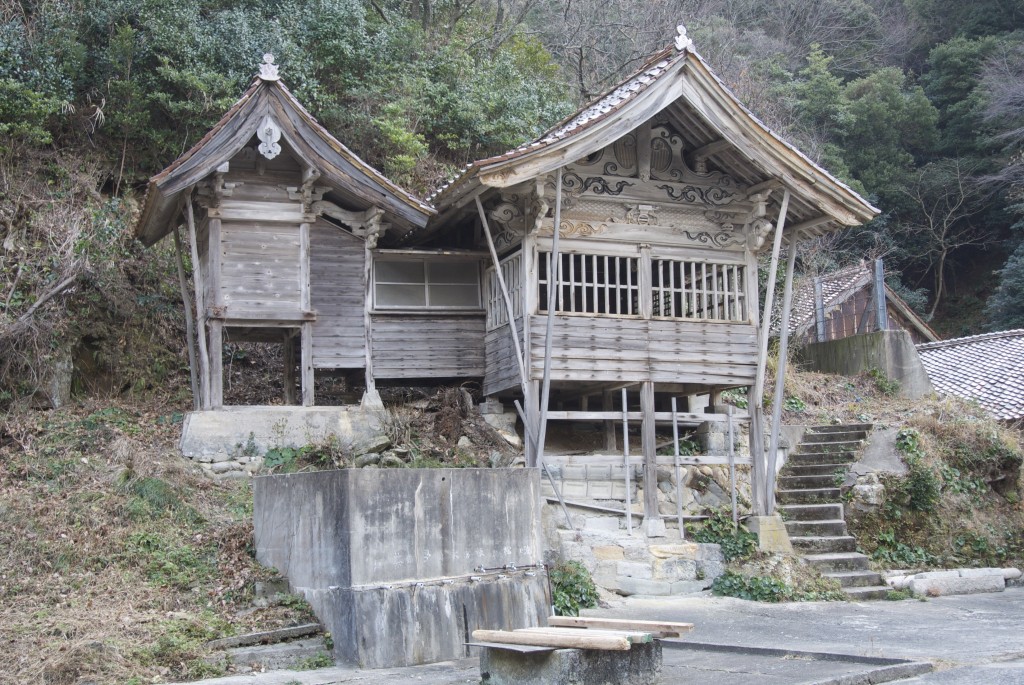
The delightful Ebisu Jinja at Okidomari, now boarded up
The third component of the World Heritage site at Iwami consists of two trading routes that led from the silver mines to small harbours on the Japan Sea coast. The track to Okidomari is 7 kilometers long; the track to Tomogaura which superseded it in the seventeenth century is 12 kilometers.
Along the tracks are memorials and protective shrines. The harbour at Okidomari turned out to be much smaller and modest than I had imagined, with a terribly run-down village nearby. The houses resembled abandoned shacks and many were boarded up, with only the elderly left. There’s a desolate and deserted air about the area, and the water was clogged up with rubbish. If you want to see how depressed some remote rural regions have become in Japan, this is the place to head. Not quite what you’d expect of a World Heritage site!
The little shrine at Okidomari looks quite a gem (see pic above), but is also sadly boarded up. Inside it is empty. Dedicated to Ebisu, guardian of fishermen and sailors, it once served to protect the vessels departing with their loads of silver. Now it stands abandoned but under World Heritage protection – an ironic paradox, for a protective shrine is itself being protected.
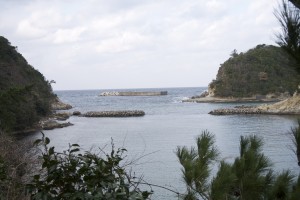
The small harbour at Okidomari
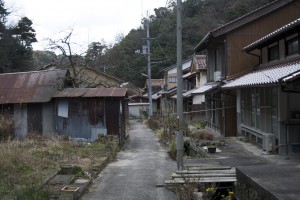
The run-down settlement at Okidomari
At Tomogaura further up the coast the guardian shrine is dedicated to Benten, and it stands on a small island beloved of the watery muse. The harbour here is more substantial, and the ‘nose-ring rocks’ to which the trading vessels once moored are still clearly visible. The village here is in much better shape than at Okidomari, and there is even a new tourist facility which in season presents information and advice. And around the corner is a wonderful stretch of sandy beach at Maji that looked like it would be full of surfers and sea-lovers in summer.
Because of the silver trade passing through the port of Tomogaura, the nearby hot spring resort of Yunotsu flourished as a place to ease the aching muscles. The waters there are still enjoyed today by tourists in a single street of preserved hot spring buildings which contain a ‘retro feel’. There are shrines too, including the Tatsu-no-gozen Shrine (Dragon Shrine) which stands in a cave looking out over the sea where sailors ask for protection.
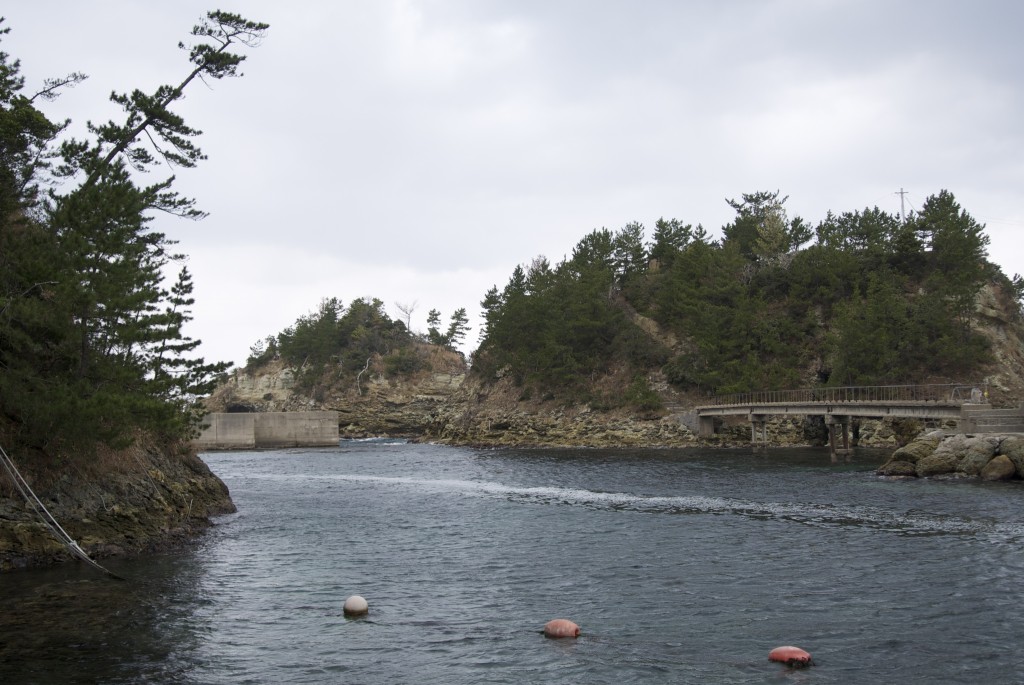
Tomogaura harbour with the Benten island guarding the entrance
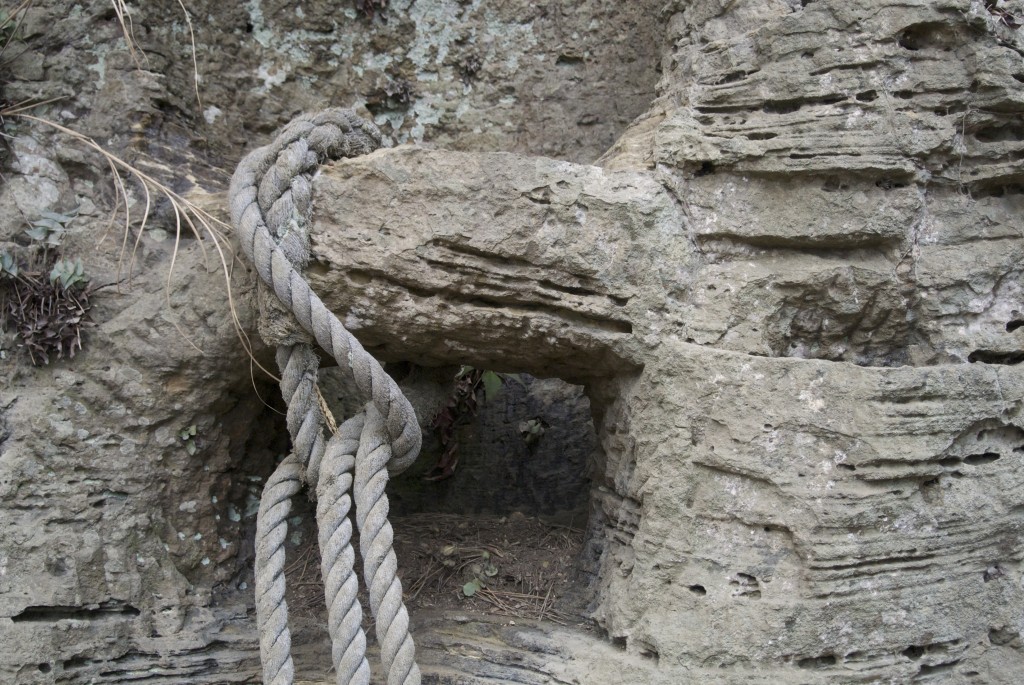
Nose-ring rock at Tomogaura to which the trading vessels carrying silver once used to moor
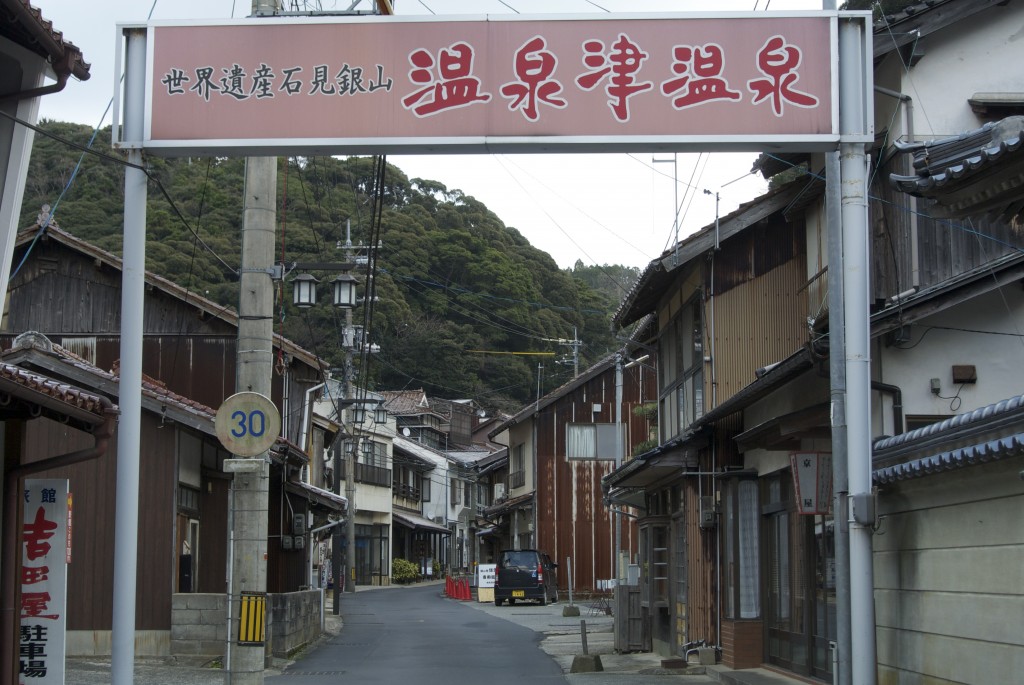
The hot spring resort of Yunotsu which once provided relief for the aching muscles of the silver mine workers
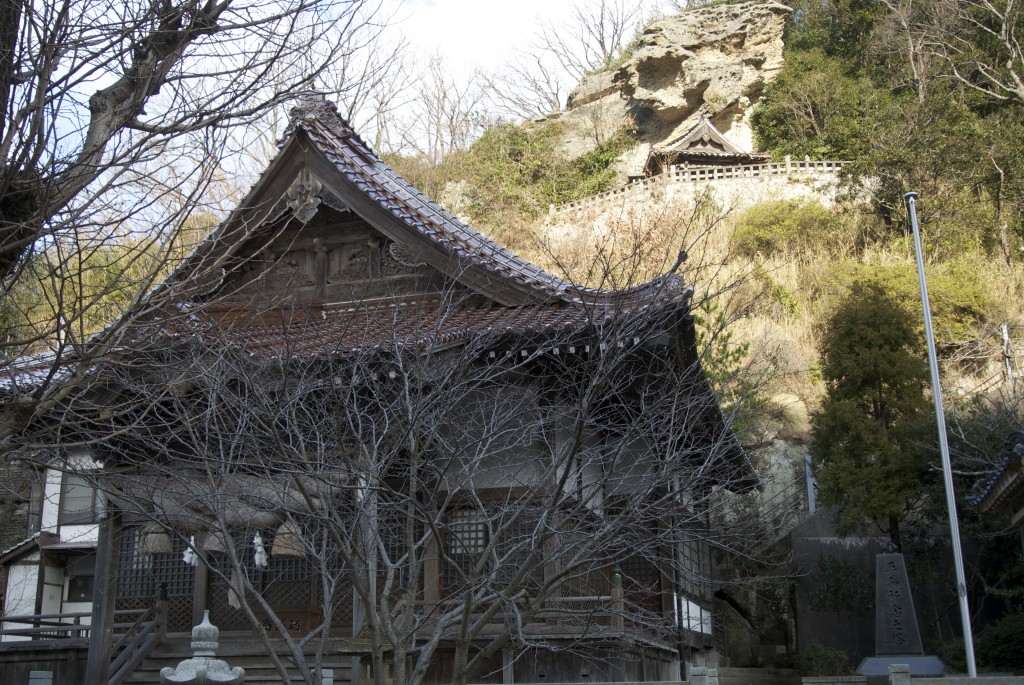
The main shrine at Yunotsu with the 'okunomiya' up on the hill behind
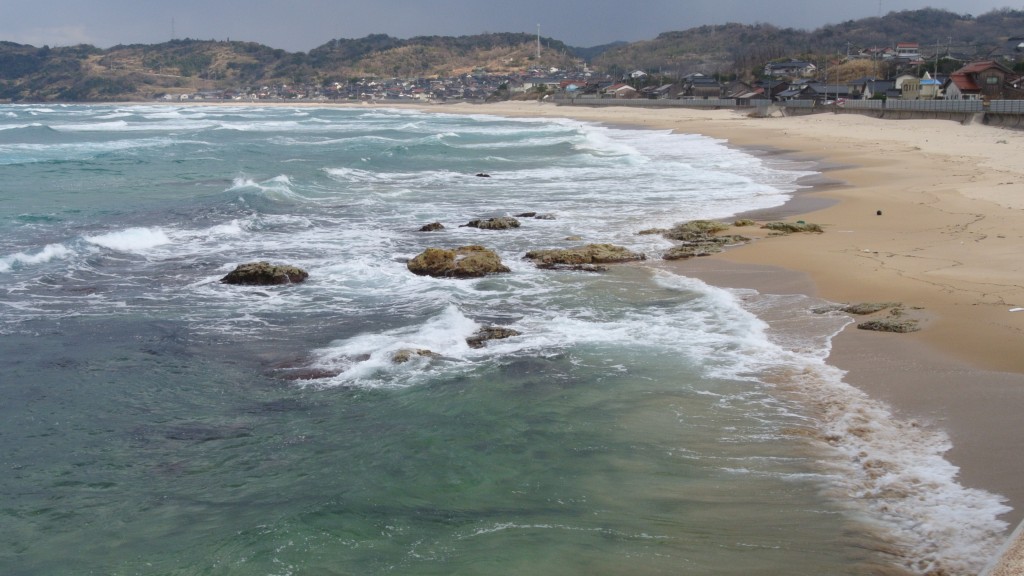
The wonderful beach at Maji – not part of the World Heritage site at all !

Leave a Reply